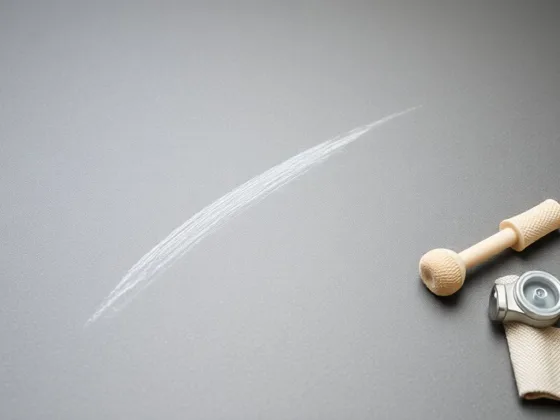Table of Contents Show
A wooden deck can be enjoyable and easy to maintain once you know the steps involved. Learning how to clean and protect your deck will help you get the most out of this outdoor space.
Cleaning and Protecting Your Wooden Deck
Cleaning your wooden deck is essential for maintaining its appearance and longevity. Here’s how to do it effectively.

Connection from Exterior to Interior
A wooden deck extending from your living room to the outdoors can make your outdoor space feel like an extension of your home. This area allows you to bring indoor comforts outside, such as electronics and furniture, without placing them directly on the ground.
However, this transition zone endures significant wear and tear. The deck faces foot traffic and various weather conditions like rain, snow, and intense sunlight.
Why Regular Maintenance is Crucial
Your deck requires consistent care due to constant exposure to human activity and environmental factors. Neglecting routine upkeep can lead to substantial damage over time, reducing both its aesthetic appeal and structural integrity. Here are some key reasons why regular maintenance is essential:
Wear and Tear
- Foot Traffic: Daily use can cause scuffs, scratches, and general wear on the wood surface. Over time, these small imperfections can accumulate, making your deck look aged and neglected.
- Furniture Movement: Shuffling chairs and tables can also contribute to surface damage. Using protective pads under furniture legs can help mitigate this issue.
Weather Exposure
- Rain: Prolonged exposure to rainwater can lead to wood rot, a condition where the wood becomes soft and deteriorates. Rot not only affects the appearance but also compromises the deck’s structural stability.
- Sunlight: Intense UV rays can cause the wood to fade, losing its natural color and vibrancy. Additionally, sunlight can dry out the wood, leading to cracks and splinters.
- Snow and Ice: In colder climates, snow and ice accumulation can create moisture problems. When frozen water expands within the wood fibers, it can cause splitting.
Dirt and Debris
- Leaves: Fallen leaves that remain on your deck can trap moisture against the wood’s surface. This creates an ideal environment for mold and mildew growth.
- Dirt: Accumulated dirt not only looks unsightly but also holds moisture against the wood. This prolonged dampness can accelerate decay.
- General Debris: Small particles like twigs or seeds can get lodged between deck boards, promoting rot by retaining moisture in hard-to-reach areas.
Regular maintenance includes sweeping away loose debris, cleaning with soapy water, and applying protective treatments to ensure your deck remains in top condition year-round.
Annual Cleaning Routine
To ensure longevity, clean your deck annually:
- Sweeping: Sweep away loose dirt, leaves, and other debris.
- Clearing Between Boards: Use a power nozzle on a hose or a putty knife to remove trapped debris between boards.
- Soapy Water Application: Apply soapy water using a scrub brush to clean the surface thoroughly.
Tip: Cover anything under your deck with a tarp before you start cleaning to protect it from runoff.

Protecting Your Deck
After cleaning, protecting your deck is crucial:
- Sealing: Apply a high-quality sealant to guard against moisture.
- Staining: Consider staining your deck for color and additional UV protection.
- Regular Inspections: Check for loose boards or nails that need tightening or replacing.
By following these steps regularly, maintaining your wooden deck becomes second nature. You’ll find yourself wondering why it seemed difficult in the first place.
Cleaning the Deck
Start with cleaning as part of caring for your deck. Begin by sweeping all loose contamination off the surface.
Steps for Cleaning Your Deck:
- Sweeping: Thoroughly sweep the entire deck surface, removing leaves, dirt, and debris. This initial step helps prevent scratching and prepares the deck for deeper cleaning.
- Clearing Debris Between Boards: Use a power nozzle on a hose or a putty knife to dislodge debris between boards. Be meticulous in this step to avoid moisture buildup that can lead to wood rot.
Tip: Cover anything under your deck with a tarp before you start cleaning to protect it from runoff.
- Soapy Water Application: Mix soapy water or use white vinegar (an insect repellent) and scrub the deck with a stiff-bristle brush. Focus on areas with ingrained dirt or mildew stains. For stubborn spots, let the solution sit for a few minutes before scrubbing.
- Rinsing: Rinse off all soap residues using clean water from a garden hose or a pressure washer set on low. Ensure no soapy residue remains as it can affect the finish over time. Pay special attention to crevices and corners where soap may accumulate.
- Inspecting for Stains: After rinsing, inspect the deck for any remaining stains. Use specialized wood cleaners if needed, following the manufacturer’s instructions carefully.
- Drying: Allow your deck to dry completely before moving on to protective measures or additional maintenance tasks. Drying may take up to 48 hours depending on weather conditions, so plan accordingly.
Pro Tips:
- Clean your deck on a still day; wind can deposit more dirt as you sweep.
- For persistent mildew, use specialized wood cleaners safe for decks.
- For grease spots (e.g., from BBQ grills), use a degreaser designed for wooden surfaces.
For stubborn stains or extensive dirt buildup, consider professional deck pressure washing services.
Protecting the Deck
Allow the deck to dry completely before beginning any protective measures—this may take several days depending on weather conditions. Once dry, follow these steps:
Steps for Protecting Your Deck:
1. Choosing Protection: Select an appropriate waterproof stain instead of paint.
- Paint sits on top of wood rather than soaking in, making it prone to peeling and wear marks.
- Stains penetrate wood fibers offering better protection and durability.
Types of Stains:
- Transparent Stains: Provide minimal color change but highlight the natural grain.
- Semi-Transparent Stains: Add color while allowing some grain visibility.
- Solid Stains: Offer most color but obscure grain-like paint with better penetration.
2. Preparing the Surface: Ensure that the deck is clean and free from debris or old coatings before applying any stain. Sand down rough spots or areas where the old stain is peeling. This preparation step is crucial for ensuring even application and long-lasting protection.
3. Applying Stain: Apply stain evenly across all surfaces following manufacturer instructions.
Tools Needed: High-quality brushes or rollers designed for staining wood; consider using a sprayer for larger decks to ensure even coverage.
Technique Tips:
- Work in small sections to avoid lap marks.
- Follow the wood grain direction when applying.
- Apply a second coat if recommended by the manufacturer.
4. Drying Time: Allow the stain to dry completely as per product instructions—typically 24-48 hours based on humidity and temperature. Ensure no foot traffic during this period to avoid uneven drying or smudging.
Regular Maintenance:
- Annual Reapplication: Although some products claim multi-year protection, reapplying yearly ensures maximum durability and visual appeal.
- Periodic Inspections: Regularly check for signs of wear such as fading, water absorption spots, or peeling. Early detection allows for timely maintenance, preventing more extensive damage.
- Routine Cleaning: Clean regularly to remove dirt and debris that can deteriorate the finish. Use mild soapy water and a soft-bristle brush for best results.
Key Benefits of Proper Protection:
- Prevents Waterlogging: Seals wood preventing water seepage which causes swelling, warping, and rot.
- Inhibits Mildew Growth: Good stains with mildew inhibitors keep mold/mildew at bay preserving aesthetics/structural integrity.
- Shields Against UV Damage: UV rays cause fading/weaken wood over time; the right stain blocks UV-reducing damage.
By following these steps diligently, you’ll ensure your wooden deck remains beautiful and functional for years.
Resources
Home Tips: https://www.hometips.com/repair-fix/deck-maintenance-wood.html
FAQs (Frequently Asked Questions)
Your deck requires consistent care due to constant exposure to the elements, which can cause wear and tear over time. Regular maintenance helps preserve the wood and extend the lifespan of your deck.
To ensure longevity, clean your deck annually by thoroughly sweeping the entire deck surface, removing debris, and washing it with a suitable cleaner.
After cleaning, protecting your deck is crucial. This can be done by sealing the wood to prevent water seepage and applying a waterproof stain or sealant to maintain its integrity.
Start with cleaning as part of caring for your deck. Begin by thoroughly sweeping the entire deck surface, removing debris, and then washing it with a suitable cleaner.
The steps for protecting your deck include choosing an appropriate waterproof stain or sealant, allowing the deck to dry completely before application, and then applying the selected protection according to the manufacturer’s instructions.
Proper protection prevents waterlogging, seals wood to prevent water seepage, and maintains the integrity of the wood, ultimately extending the lifespan of your deck.










